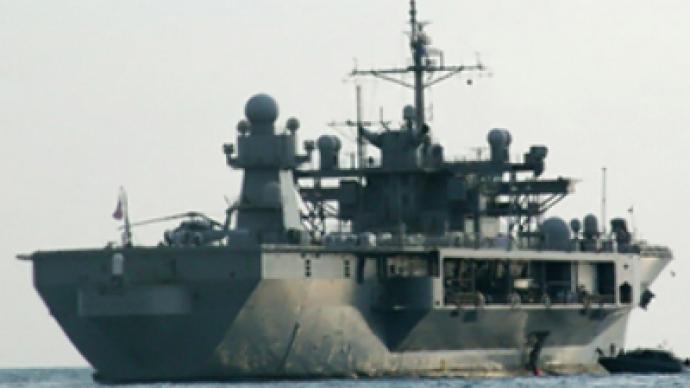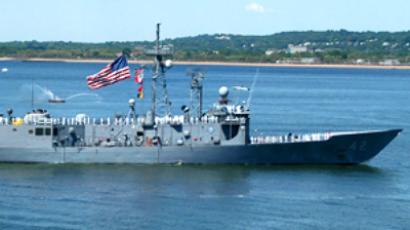Undercover US ships may weigh anchor in Black Sea

Even though Russian and American leaders will discuss ‘resetting’ the countries bilateral relations at the G20 summit in London, US military vessels could still appear in the Black Sea, but under a Ukrainian flag.
Moreover, there is a possibility that during the so-called ‘transition period’ the crews of these vessels will consist of US Navy personnel, says Krasnaya Zvezda newspaper – an official publication of the Russian Defense Ministry.
The article’s author, Counsellor of State and Candidate of Historical Sciences Vladimir Kozin, believes that during annual NATO naval exercises ‘Sea Breeze’ and ‘Loyal Mariner’ America carries out the study and exploration of Ukraine’s Black Sea ports.
Moreover, Ukrainian activists, especially those at the port cities of Sevastopol and Odessa, have repeatedly protested against the country’s participation in NATO war games in the Black Sea.
Kozin reminds that in the last few years the US has repeatedly tried to reconsider the existing provisions on the Black Sea straits, and obtain free access to the region.
Thus, in August 2008 NATO forces broke the 1936 Montreux Convention – an international agreement on the status of the Black Sea straits.
The Convention says that no more than nine warships of non-coastal states may be simultaneously present in the Black Sea and their maximum total tonnage must not exceed 45,000.
Meanwhile, during the Georgia-South Ossetia conflict in August 2008, both these provisions were broken as ten NATO warships entered the Black Sea and their total tonnage constituted 48,700 tonnes.
The sea of many interests
Washington has already been pursuing this policy for a long time, Kozin says – since it began seeing the Black Sea area as a key region in regard to strengthening its existing positions in Europe and Eurasia, and in acquiring new ones.
Presence in the Black Sea gives the US an opportunity to keep the local energy networks under control, have a bearing on Russia, and control the situation in the Caucasus, the Middle East, Central Asia and Iran.
The basics of American policy in the Black Sea and the Caspian were formulated in an announcement by the US Department of State which was circulated at the OSCE 1999 summit in Istanbul. It features boosting the US military presence in the Black Sea – and since then America has achieved substantial success.
In 2005 Washington signed agreements with Romania, and then with Bulgaria, on deploying US naval bases on these countries’ Black Sea coast. Officially it was said that the bases were necessary to maintain communications with military forces in Iraq.
Meanwhile, the presence in the Black Sea of non-coastal states’ warships or submarines equipped with nuclear long-range cruise missiles is a very dangerous situation, because the US possesses missiles able to strike targets as far away as 5,000 km.
That means they can reach objects of vital importance in Central Russia, Kozin says.
In Russia’s opinion, such moves alongside plans to deploy an anti-missile defense shield in Eastern Europe threaten its national security.
And Turkey, which in accordance with the Montreux Convention possesses sovereignty over the Black Sea straits, is worried that America’s penetration into the Black Sea may lead to the revocation of the convention and decrease Ankara’s influence in the area.
Both Moscow and Ankara consider that measures undertaken by Black Sea coastal countries – such as the existence of Blackseafor and Black Sea Harmony security structures – are enough to enhance stability and security in the region.













